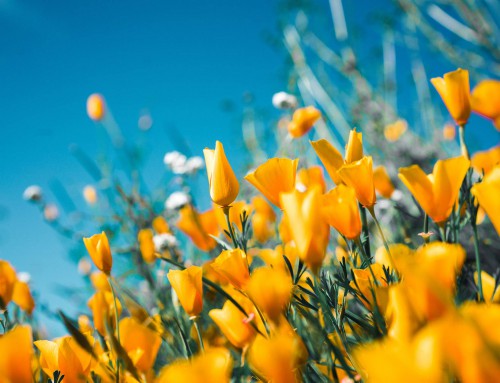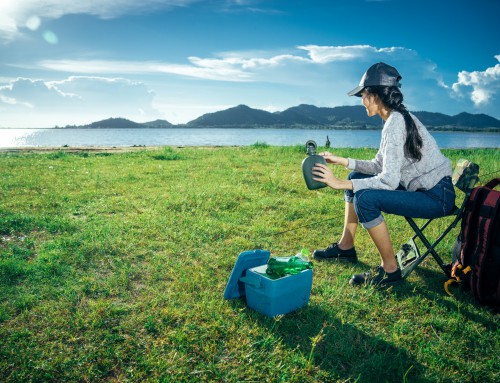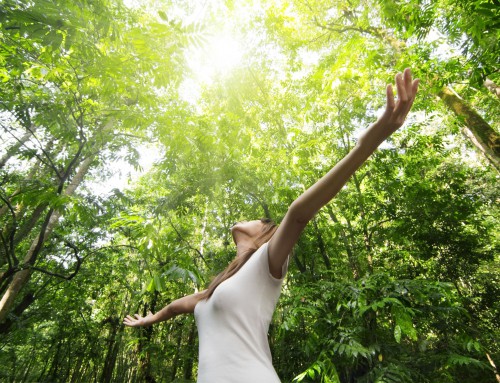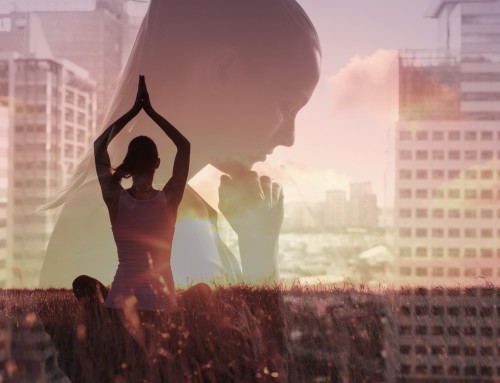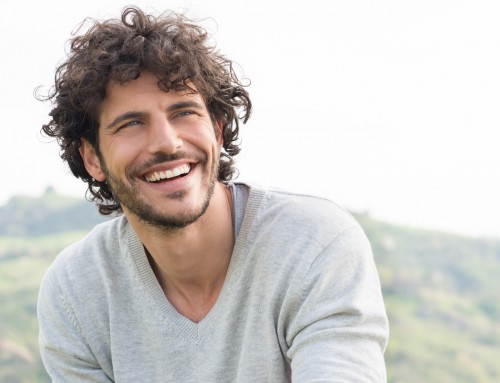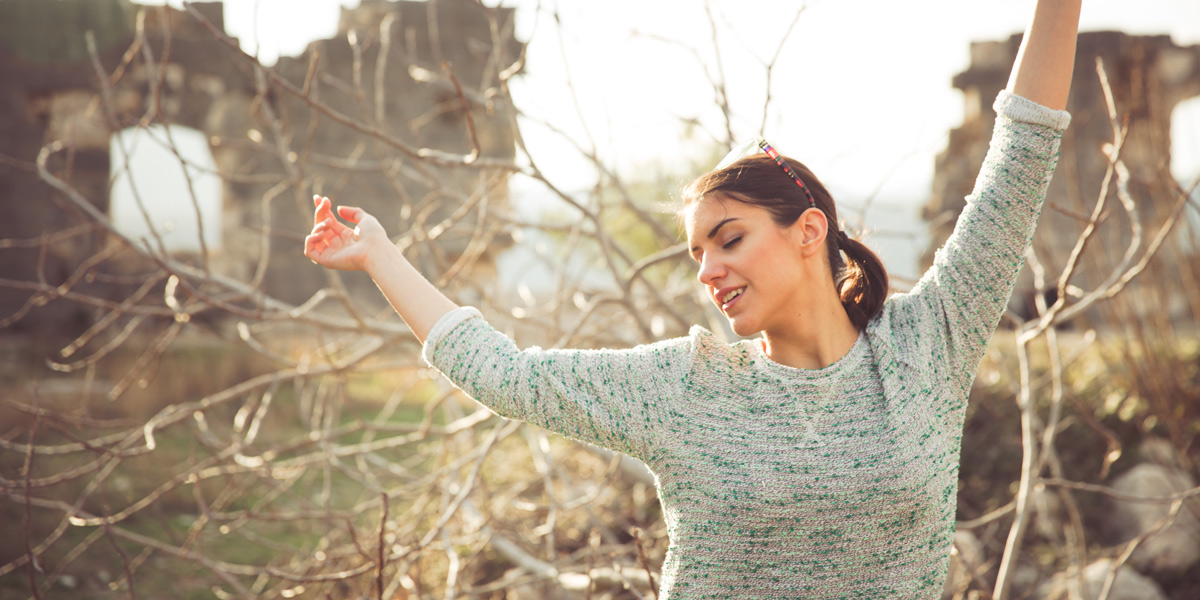
I was an anxious teenager. If you were to have asked me why, or what I was anxious about, I’d have been hard pressed to answer. In those days, it was fashionable to be ‘cool’ and I became known for my cool demeanour. But I only accomplished this by suppressing the symptoms of underlying anxiety, such as tension in my shoulders, chest, stomach and legs. For me, being cool was hard work.
While most of us experience anxiety at job interviews or when asked to give a speech to hall full of strangers, many people experience low level anxiety a lot of the time, even when there is no obvious trigger.
The physiology of anxiety
 The stress or fear response is ingrained in our nervous system and is essential for our survival. When you perceive potential danger, your body’s ‘fight or flight’ response automatically kicks in. Heart rate goes up and breathing becomes rapid as the body makes sure enough blood and oxygen is present in its essential organs and major muscle groups. Adrenaline, cortisol, norepinephrine and other biochemicals are released into your blood to keep you awake, aware, focused and responsive.
The stress or fear response is ingrained in our nervous system and is essential for our survival. When you perceive potential danger, your body’s ‘fight or flight’ response automatically kicks in. Heart rate goes up and breathing becomes rapid as the body makes sure enough blood and oxygen is present in its essential organs and major muscle groups. Adrenaline, cortisol, norepinephrine and other biochemicals are released into your blood to keep you awake, aware, focused and responsive.
This automatic response to fear is appropriate when it comes to say, confronting a bear in the woods – the extra blood, oxygen and adrenaline pouring into your arms and legs will help you fight or fly away from the bear. But what about that public speech – fighting with someone in the audience or running out of the hall will temporarily reduce your stress levels, but it probably won’t do your public speaking career much good.
At some time or other we all find ourselves in stressful situations where all we can do is sit there (or stand at a podium) and take it. Potentially toxic stress chemicals, such as adrenaline and cortisol, can be pouring through your blood-stream and the only acceptable social response is to try and remain calm, cool and unaffected.
So, what happens to that stress-response if it is not dissipated by the physical activity of fighting or fleeing? Some believe that long exposure to the stress-response – perhaps you have a job or in a relationship that is very stressful – can cause more permanent changes in how your brain responds to stress.
According to the National Institute of Mental Health:
“Several parts of the brain are key factors in the production of fear and anxiety… scientists have discovered that the amygdala and the hippocampus play significant roles in most anxiety disorders.
The amygdala is an almond-shaped structure deep in the brain that is believed to be a communications hub between the parts of the brain that process incoming sensory signals and the parts that interpret these signals. It can alert the rest of the brain that a threat is present and trigger a fear or anxiety response.
The emotional memories stored in the central part of the amygdala may play a role in anxiety disorders involving very distinct fears, such as fears of dogs, spiders, or flying. The hippocampus is the part of the brain that encodes threatening events into memories.”
‘Memories’ of previous stressful situations can ‘rewire’ your brain so that it responds inappropriately to situations that are of no real threat.
And there was I sitting in pubs with friends, suppressing my symptoms of low-level anxiety and trying to appear ‘cool’. Probably because, as teenagers, my friends were just as self-absorbed as myself, I got away with it – but at a cost. I felt the tension in me was growing and I started experiencing symptoms of depression.
Yoga to the rescue
 Around this time, I became fascinated by yoga philosophy, started physical yoga and turned vegetarian. After a long session of yoga asanas and pranayam breathing exercises, I would feel on top of the world for up to an hour. But then the anxiety would return.
Around this time, I became fascinated by yoga philosophy, started physical yoga and turned vegetarian. After a long session of yoga asanas and pranayam breathing exercises, I would feel on top of the world for up to an hour. But then the anxiety would return.
All the eastern philosophy I read at that time emphasised that meditation was an essential part of yoga practice, I tried various forms of meditation – but my mind seemed far too restless to get anything from them. Then, an older brother of one of my friends recommended Transcendental Meditation (TM).
My very first TM meditation was a revelation. At one time during the 20 minute practice, it was as if all I had ever searched for in my life was there right in front of me and it was so simple and it was so obvious and it was me. I faced me. And that me was everlasting serenity and silence. If you were to have measured that transcendental experience in relative time it may have only have lasted a moment, but that moment felt eternal.
There is a verse from Maharishi’s translation of the Bhagavad Gita, where Lord Krishna says to the warrior hero Arjuna,
In this (Yog) no effort is lost and
no obstacle exists. Even a little of
this dharma delivers from great fear.
(Bhagavad Gita, 2.40)
All my well-hidden fears and anxieties did not immediately disappear with this little taste of the infinite, but it felt like a great weight I’d been carrying around suddenly became far lighter.
What is the nature of fear?
Another Vedic verse Maharishi was fond of states:
All fear is born of duality
(Brihadaranyaka Upanishad, 1.42)
Fear arises when we believe something ‘other’ exists – if there is something that is not us, that not-us can potentially cause us harm. Yet, according to the Upanishadic sages, the idea of anything ‘other’ is a delusion, a Maya. For the enlightened sage, there is and never has been anything other than oneness and, like waves on a great ocean, the ever-changing multiplicity that is displayed around us is just the playful expression of an underlying field of unity. The illusion of separation and the fear it engenders must therefore be borne out of a mistaken way of seeing the world.
 The ancient Vedic literature illustrates this in the snake and rope story.
The ancient Vedic literature illustrates this in the snake and rope story.
A man came into a darkened hut and thought he saw a snake coiled up in the corner. Filled with fear, he ran out into the village crying snake! snake! The villagers met to decide what to do about this snake. One man said, “Let’s take a light and have a good look”. So, he lit a torch and shone it through the hut door; but he found it was not snake after all – just a piece of coiled rope.
It was wrong perception that created a snake out of the rope and all the fear it engendered; the torch light showed that this fear was unfounded. So, the enlightening knowledge of unity shows duality or the perception of otherness to be a sham – a harmless obscuring appearance on the surface of unified wholeness; a transitory wave on the infinite ocean of life.
Ayurveda and Anxiety
Ayurveda has a term called Ati, which means the excessive absorption of our senses in the surface value of the object we perceive. In other words, we are overshadowed by some sensory experience and become ‘object-referral’ where the object of perception so completely occupies our mind that our balance and sense of self, or ‘self-referral’, is lost. This tendency to become overwhelmed by sense objects is more prevalent when Vata, the Dosha or principle of movement, is out of balance in us.
Each of us respond to stress in different ways. Those who have a hotter, Pitta nature are more easily angered and can become aggressive when over-excited by stress; those with a heavier, slower Kapha nature can become despondent and depressed; people with the lighter, moving Vata nature become overwhelmed and anxious when rushed, strained or tired, while travelling, or when they must skip or rush meals. If the cause of their anxiety is not addresses and allowed to persist, insomnia and panic attacks can result.
So, how to balance the nervous system so you are less prone to anxiety?
- First thing to do is remove those factors that may cause any increase in Vata Dosha: plan ahead, so that you avoid having to rush or skip meals; avoid too much travel; get plenty of rest and have a good night’s sleep; stay warm and avoid drafts; don’t over-exercise
- Introduce elements that bring calm to this hyperactive Dosha, such as: a good steady routine; a stable and dependable home life; Vata-reducing beverages; sweet, sour and salty foods; regular oil massage
- Practice Transcendental Meditation and Yoga
- Have Panchakarma purification treatments.
Transcendental Meditation (TM) and Anxiety:
All of us have had to suffer “the slings and arrows of outrageous fortune” and we are advised to “expect the unexpected”. It has been said that 90% of what happens to us is outside our control and only the remaining 10% lies within our control. How we deal with what life presents us with is what counts – we can either grow or wither as a result of the stresses we encounter.
 Living is inherently changeable and stressful, but that is not necessarily a bad thing. If we lived a life avoiding stress and challenges we would simply stop growing as individuals. Yet our nervous system has its limits and when life becomes too stressful, unresolved imbalances accumulate; psychological and physiological problems can grow and this can result in us becoming more sensitised and more reactive to stressful situations.
Living is inherently changeable and stressful, but that is not necessarily a bad thing. If we lived a life avoiding stress and challenges we would simply stop growing as individuals. Yet our nervous system has its limits and when life becomes too stressful, unresolved imbalances accumulate; psychological and physiological problems can grow and this can result in us becoming more sensitised and more reactive to stressful situations.
The beauty of Transcendental Meditation is that it reverses this vicious stress cycle by allowing you to achieve a natural state of inner stillness and calm. Through regular practice of this simple technique the serenity achieved during meditation carries on into daily life. As time passes you become naturally more relaxed within, even while surrounded by all the changes, challenges and potentially stressful situations that life offers.
Here we have the most natural antidote to anxiety as TM allows you to become more self-referral as opposed to object-referral. A wave on an ocean may feel itself stressed by being tossed here and there by every wind that comes along. But if that wave were to settle within its own depths and discover that its source was an unimaginably huge ocean – all the to-ing and fro-ing on the surface of its existence would become a joy rather than a cause of bother. The memory of the almost infinite source of that wave would be there in amongst all the surface changes it encounters. This self-referral on the level of the wave is paralleled in the self-referral brought about by TM. When we become re-connected to our own infinite source, worries and anxieties drop away naturally.
Sleep versus Anxiety
 Anxiety and disturbed sleep can feed into each other to create another vicious cycle. In other words, anxiety tends to disturb our sleep and disturbed sleep tends to increase anxiety. So how do we reverse this to create a virtuous cycle – get better sleep and thereby reduce anxiety.
Anxiety and disturbed sleep can feed into each other to create another vicious cycle. In other words, anxiety tends to disturb our sleep and disturbed sleep tends to increase anxiety. So how do we reverse this to create a virtuous cycle – get better sleep and thereby reduce anxiety.
- Early to bed is an old wise proverb. The best quality sleep is obtained between 10pm and 2pm according to Ayurveda. This is the Pitta or processing part of the night-time cycle where you have the best chance to process the impressions and stresses gathered during the day
- Make sure you don’t eat a lot in the evening. Between 6pm and 10pm is known as a Kapha period in Ayurveda, where your body and digestive system slows down ready for sleep. Your digestive capacity will be less, so a light soup with some toast is best. A full meal in the evening will tend to disturb your sleep
- Transcendental Meditation and the regular practice of yoga are both great at improving sleep.
- Take a good rest break at meal times to improve digestion and to prevent you becoming highly strung from rushing about too much
- Many people find that the Maharishi AyurVeda herbals called Blissful Sleep really help with sleep. There is a general sleep remedy called Blissful Sleep Basic, and dosha-specific remedies: Blissful Sleep Vata, Blissful Sleep Pitta and Blissful Sleep Kapha
- The Maharishi AyurVeda Health Centre offers a ‘One Day Wonder’ that includes a whole body massage followed by Shirodhara. Shirodhara consists of a continuous flow of oil over your forehead and head which is deeply relaxing and which supports good quality sleep. Both parts of the treatment are excellent as balancing Vata dosha and calming down an anxious mind
- In the evening, boil a little milk and add a pinch of ginger, cinnamon, cardamom, and nutmeg. Drink this before bed as a nutritious way to soothe your nerves and promote sound sleep.
- Vata Balance Aroma Oil and Peace at Night Aroma Oil are both calming to the nervous system.
- Peace of Mind (MA1401) helps maintain a peaceful mind and calm emotions without reducing alertness.
Eating and anxiety
Both stress and anxiety are known to create an excess of toxins, such as free radicals, in your body, which cause it to under-perform and which are also associated with heart disease and many other ailments. Certain foods and herbs contain high levels of antioxidants – free-radical scavengers that help remove these damaging elements from your body.
- Fresh, organic fruits and vegetable cooked with spices and eaten along with freshly cooked grains, will provide you with a host of naturally occurring antioxidants
- Maharishi Amrit Kalash and Maharishi Chyavanprash are available from Maharishi Ayurveda Products and both contain very powerful antioxidants.
Other eating tips to help reduce both Vata dosha and help prevent anxiety:
- Sit and enjoy meals at regular times and add Vata Churna spice mix to your food. You can either add it during cooking or just sprinkle it on to your food after cooking
- Avoid ice cold drinks
- Limit raw and cold foods such as raw vegetables and salads
- Limit alcohol consumption as it has an adverse effect on the nervous system
- Reduce caffeinated beverages and other stimulants, as these increase Vata dosha
- Drink Raja’s Cup – a delicious coffee substitute which contains tonic herbs that also help you relax
- Drink Vata Tea.
Exercise to reduce anxiety
Research suggests that the happiest and healthiest people are those who exercise regularly. Exercise is also an excellent way to de-stress, but it must be done in moderation as over-exercise will increase Vata Dosha and be counter-productive.
Yoga is an integral part of Ayurveda and is and wonderful way to exercise all parts of your body. It soothes the nerves, balances the mind and integrates all the five type of Prana or life-force energies in your body.
 Massage away your tendency towards anxiety
Massage away your tendency towards anxiety
Sesame oil massage is said to be one of the best remedies for Vata dosha and since anxiety is strongly linked to Vata, daily oil massage is highly recommended to reduce anxiety.
First thing in the morning, warm your sesame oil to about body temperature. Then massage the oil on as many parts of your body as you can get to – long strokes on the limbs and clockwise circular strokes on the joints. Followed this by a warm shower or bath. You’ll be surprised just how relaxed you feel afterwards.
For even better results use Vata Massage Oil, which contains herbs that are relaxing and that reduce Vata.
Anxiety is natural
Let’s face it, life is constantly changing and nothing is ever certain, so a certain amount of anxiety is perfectly natural. If we did not have anxiety, or the stress-response, we would never properly respond to danger and we would not have survived as a species.
Yet for many people, modern society has become so busy and so overactive that it is easy to get overwhelmed and lose both self-referral and equanimity. For many this means that anxiety has become a constant companion.
One simple solution is to just slow down and moderate both the pace and the content of your life.
Maharishi AyurVeda is a great help as it reminds us of the simple things we should be doing anyway. Yet these simple things can make a huge difference for the better.

